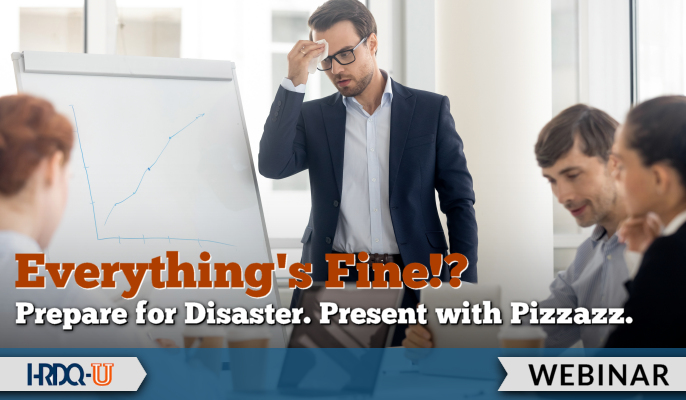- 827 Lincoln Ave. #B-10 West Chester, PA 19380
- support@hrdq.com
- +1-610-279-2002
Quick Links
Menu
Featured Topics
Menu
Total Results
We could not find what you're looking for. Please try again.No Record Found

What could go wrong? Everything or nothing, as this session vividly demonstrates through a creative combination of comedic act and presentation analysis. The presentation gets off to a rocky start when the presenter – former Disney leader Lenn Millbower – is locked out of the room, and his not-very-good brother Les takes over. Calamity follows as Les communicates ineffectively, turning easy-to-comprehend information into complicated mush, displays hideous slides, and blows up the laptop. The comedic segment ends as Les runs from the platform in total disarray. Lenn then takes over and, with the participants’ help, discusses what can go wrong in a presentation and how to prepare for the worst.


Lenn Millbower, the Mouse Man™ and author of Care Like a Mouse, teaches Walt Disney-inspired service, leadership, innovation, training, and success strategies. Everything Disney touched seems magical. It isn’t. It’s a method. Lenn saw that method up close. He spent 25 years at Walt Disney World as an Epcot Operations trainer, Disney-MGM Studios stage manager, Animal Kingdom opening crew, Disney Institute, Disney University, and Walt Disney Entertainment management. Now, he shares methodologies that will help you make your own magic.
Connect with Lenn on LinkedIn, Facebook, Twitter, YouTube, and at www.likeamouse.com.
Training Tools for Developing Great People Skills
This event is sponsored by HRDQ. For 45 years HRDQ has provided research-based, off-the-shelf soft-skills training resources for classroom, virtual, and online training. From assessments and workshops to experiential hands-on games, HRDQ helps organizations improve performance, increase job satisfaction, and more.
Learn more at HRDQstore.com
“A fun yet robust presentation with useful tips for junior to seasoned presenters!”
– Bee C.
“Loved this webinar. So many “golden nuggets” of advice for those of us who present training on a regular basis… and think we have heard it all. Keep bringing Lenn Millbower back. He’s a gem!”
– Debbie M.
“The presenter was great and allowed for plenty of interaction.”
– Catherine G.

Sign up to be notified of upcoming live webinars, in-depth workshops, podcasts, blog posts, promotions and much more. Stay ahead of the curve and subscribe for FREE today!
One Response
Are you prepared for the worst thing that can happen during a presentation?
Add your thoughts in the comments section below! We’ll answer your questions here and during the live event Q&A.